+8801715532130
Gulshan-2, Notun, Bazar, Dhaka 1212

Showing all 9 results
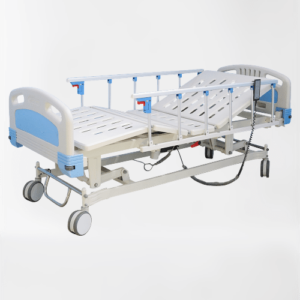
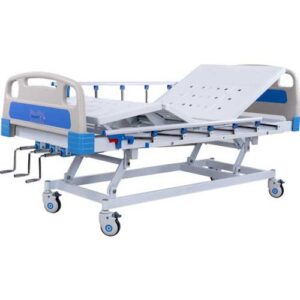
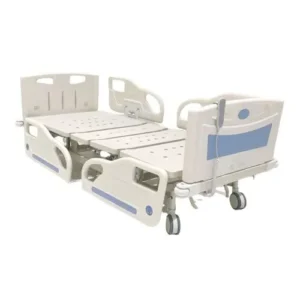
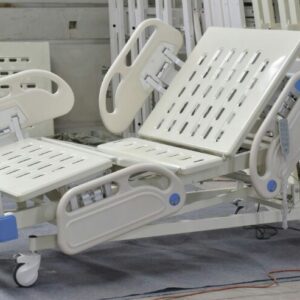
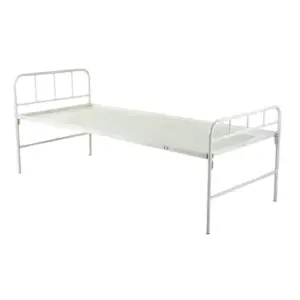
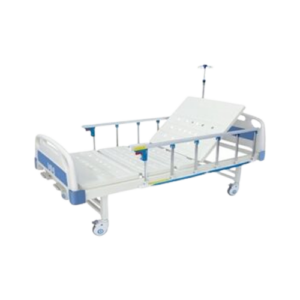
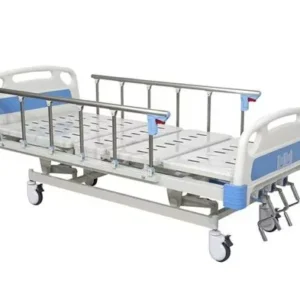
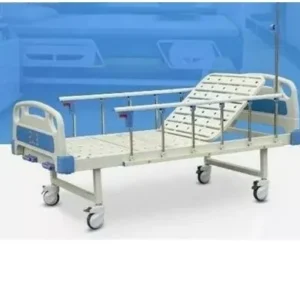
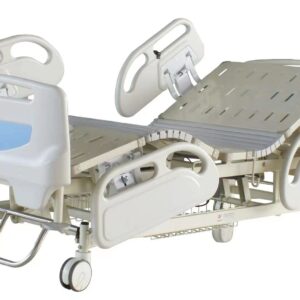
2 function, 3 function, 5 function, ICU bed price in Bangladesh, starting from Tk 35 thousand to Tk 1 lakh 40 thousand. We import hospital beds in Bangladesh and wholesale and retail at low prices.
You can buy hospital beds of any brand from us at affordable prices for anyone in your family for home and hospital use.
| Serial No : | Hospital Beds Price List in Bangladesh | Price (BDT) |
|---|---|---|
| 1 | Five Function ICU Electric Bed Hebei Baiyang A-7C Price in Bangladesh | 140,000/- (BDT) |
| 2 | Five Functions ICU Electrical Hospital Bed Price in Bangladesh | 130,000/- (BDT) |
| 3 | High Quality Two Cranks Hospital Bed Price in Bangladesh | 35,000/- (BDT) |
| 4 | Hospital Bed 3 Function ABS Price in Bangladesh | 55,000/- (BDT) |
| 5 | Hospital Bed YKC003 Two Function Manual Price in Bangladesh | 35,000/- (BDT) |
| 6 | HR-858 hospital equipment medical Five Functions Electric Hospital ICU Bed for patient | 140,000/- (BDT) |
Medical hospital beds are specialized beds used in hospitals and other medical facilities to provide patients with a comfortable and safe resting place during their hospitalization. These beds are designed to meet the specific needs of patients, including those with mobility issues, chronic pain, and other medical conditions.
Hospital beds are adjustable and can be customized to fit the needs of individual patients. They can be raised or lowered to help patients get in and out of bed more easily, and they may feature special features like railings to help prevent falls, built-in scales to monitor patient weight, and specialized mattresses to prevent bedsores.
Hospital beds are also equipped with monitoring systems to track patients’ vital signs and alert healthcare providers to any changes in their condition. Some beds may also be outfitted with electronic controls for lighting, temperature, and other environmental factors, allowing patients to customize their environment for maximum comfort.
Overall, medical hospital beds are an essential component of patient care in hospitals and other medical facilities, providing patients with a safe and comfortable place to rest while they receive treatment for their medical conditions.
Medical hospital beds are designed to meet the unique needs of patients who require hospitalization or medical treatment. They are different from regular beds in several ways:
Adjustability: Hospital beds are designed to be adjustable to allow for optimal positioning of the patient. This includes the ability to raise or lower the head and foot of the bed, as well as adjusting the overall height of the bed. This is important for patients who may need to sit up or lie flat for medical reasons.
Mobility: Hospital beds are often equipped with wheels or casters, making it easier to move the bed around the hospital. This is important for patient transport and for moving the bed in and out of patient rooms.
Safety features: Hospital beds often come with safety features such as bed rails, which help prevent patients from falling out of bed. They may also have built-in alarms to alert staff if the patient attempts to get out of bed without assistance.
Specialized surfaces: Hospital beds may have specialized surfaces such as pressure-relieving mattresses or air-filled surfaces to prevent pressure ulcers or bedsores in patients who are bedridden for extended periods.
Additional features: Hospital beds may come equipped with additional features such as overbed tables, IV poles, or built-in scales to weigh patients without having to move them.
Overall, medical hospital beds are designed to provide comfort, safety, and functionality for patients in a hospital or medical setting.
Medical hospital beds are designed to provide a safe and comfortable environment for patients who are receiving medical care. Some of the key features of medical hospital beds include:
Adjustability: Hospital beds are adjustable in multiple ways, including the height of the bed, the angle of the backrest and footrest, and the positioning of the side rails.
Mobility: Many hospital beds have wheels that make it easy to move the bed around the hospital or healthcare facility. Some beds also have brakes to keep them in place when needed.
Mattress: Hospital beds are typically equipped with a specialized mattress that is designed to reduce pressure points and prevent bedsores.
Side rails: Most hospital beds have side rails that can be raised and lowered to help keep patients safely in bed.
Remote control: Many hospital beds come with a remote control that allows the patient or caregiver to adjust the bed’s position without having to manually adjust it.
Patient monitoring: Some hospital beds are equipped with sensors that can monitor a patient’s vital signs, such as heart rate and breathing.
Accessibility: Hospital beds are designed to be easily accessible to medical staff, allowing them to provide care to the patient without having to move them to a different location.
Overall, the features of a medical hospital bed are designed to provide a safe and comfortable environment for patients who are receiving medical care.
There are several types of medical hospital beds available, each designed to meet specific medical needs. Here are some common types:
Standard hospital bed: This is the most common type of hospital bed and is designed for general medical use. It usually has adjustable height and can be raised or lowered to allow for easier patient access.
Low hospital bed: This type of bed is closer to the ground than a standard hospital bed, making it easier for patients to get in and out of bed without the risk of falling.
Bariatric hospital bed: This type of bed is designed for overweight or obese patients and has a higher weight capacity than a standard hospital bed.
ICU hospital bed: This type of bed is designed for use in intensive care units and has features such as electronic controls, built-in scales, and pressure-relieving mattresses.
Pediatric hospital bed: This type of bed is designed for children and has features such as smaller sizes, colorful designs, and safety rails.
Specialty hospital bed: This type of bed is designed for specific medical needs such as patients with burns, spinal cord injuries, or those needing traction.
Trendelenburg hospital bed: This type of bed allows the patient’s head to be lowered and their feet to be raised, which is useful for certain medical procedures or conditions.
It’s important to note that not all hospitals will have every type of bed available, as their availability will depend on the specific needs of the patients they serve.
Choosing the right type of medical hospital bed is crucial to ensure the comfort and safety of the patient. Here are some factors to consider when selecting a hospital bed:
Patient’s needs: Consider the patient’s medical condition and mobility level. For example, if the patient has limited mobility or requires frequent repositioning, a bed with adjustable height and a range of positioning options may be necessary.
Size and weight capacity: Choose a bed that accommodates the patient’s size and weight, including any medical equipment or accessories that may be needed.
Durability and maintenance: Look for a bed that is sturdy and easy to maintain. Hospital beds are often subjected to frequent use and wear and tear, so it’s important to choose a bed that can withstand heavy use and is easy to clean.
Safety features: Ensure that the bed has proper safety features, such as bed rails, locking brakes, and a backup battery in case of power outages.
Cost: Hospital beds can vary significantly in price, so it’s important to consider your budget and any insurance coverage that may be available.
Consult with your healthcare provider or a medical equipment supplier for guidance on selecting the right hospital bed for your specific needs.
The weight capacity of a medical hospital bed can vary depending on the specific model and manufacturer. Generally, hospital beds have weight capacities that range from 250 pounds (113 kilograms) to 500 pounds (227 kilograms) or more.
It’s important to note that weight capacity is an important consideration when selecting a hospital bed, as exceeding the weight limit can result in injury or damage to the bed. It’s also important to take into account the weight of any medical equipment, such as traction devices or ventilators, that may be attached to the bed.
If you need information about the weight capacity of a specific hospital bed, you should consult the manufacturer’s specifications or contact the manufacturer directly. Additionally, healthcare providers such as nurses or medical supply companies can provide guidance on selecting the appropriate hospital bed based on the patient’s needs.
When choosing a medical hospital bed, there are several safety features that you should consider to ensure the safety and comfort of the patient. Some of the most important safety features to look for include:
Bed rails: Bed rails can prevent patients from falling out of bed, especially during times of restlessness or confusion. Look for bed rails that are adjustable and have a locking mechanism.
Brake system: The brake system on a hospital bed should be easy to use and effective in keeping the bed stable and stationary. Make sure the brakes are easily accessible and lock all four wheels securely.
Height adjustment: The height of the bed should be adjustable so that the patient can easily get in and out of bed. A bed that is too high or too low can be a safety hazard.
Emergency controls: The bed should have emergency controls that allow the patient or caregiver to quickly and easily lower the bed in case of an emergency.
Mattress: A good quality mattress can help prevent bedsores and improve patient comfort. Look for a mattress that is pressure-relieving and made of high-density foam.
Weight capacity: The bed should be able to support the weight of the patient comfortably. Make sure to check the weight capacity before purchasing the bed.
Side-sleeping positioning: Some medical conditions require the patient to sleep on their side. If this is the case, make sure the bed has a side-sleeping positioning feature.
Ease of cleaning: Hospital beds should be easy to clean and sanitize. Look for beds that have smooth surfaces and removable parts for easy cleaning.
Overall, when choosing a hospital bed, safety should be the top priority. Make sure to carefully evaluate all safety features before making a purchase.
Adjustable medical hospital beds offer several benefits for patients, caregivers, and healthcare facilities. Here are some of the most significant benefits:
Enhanced Comfort: Adjustable hospital beds can be positioned in different angles to provide maximum comfort for patients. The ability to adjust the bed’s height, backrest, and footrest can help relieve pressure points and reduce pain, making it easier for patients to rest and recover.
Improved Safety: Hospital beds that are adjustable can help improve patient safety. They can be positioned in a way that helps prevent falls and allows patients to get in and out of bed more easily. Additionally, features such as side rails and locking mechanisms can provide added security for patients who are at risk of falling or wandering.
Better Patient Care: With an adjustable hospital bed, caregivers can easily position patients for medical procedures or daily care activities such as changing dressings, bathing, and feeding. This makes it easier for healthcare professionals to provide quality care to their patients.
Versatility: Adjustable hospital beds can accommodate a range of patients with different needs. They can be adjusted for patients who require special positioning due to medical conditions or disabilities, or for those who simply prefer a specific sleeping position.
Cost-Effective: In some cases, adjustable hospital beds may be more cost-effective than non-adjustable beds. For example, they can reduce the need for additional equipment such as bed rails or transfer boards, and they can help prevent injuries that could result in additional healthcare costs.
Overall, adjustable medical hospital beds offer numerous benefits for patients, caregivers, and healthcare facilities. They can improve comfort, safety, patient care, and versatility, making them a valuable investment for any healthcare setting.
Yes, medical hospital beds can be rented or purchased from various medical supply companies. These companies typically offer a wide range of hospital beds for rent or purchase, including standard hospital beds, low hospital beds, bariatric hospital beds, and more.
The rental or purchase of a hospital bed is often necessary for individuals who require long-term care at home or for those who need a hospital bed during their recovery from an illness or surgery. Additionally, hospital beds can be customized with various features such as adjustable height, head and foot positioning, and side rails to meet the specific needs of the individual.
It’s important to note that the cost of renting or purchasing a hospital bed can vary depending on the type of bed, the duration of the rental or purchase, and the location of the medical supply company. It’s recommended to compare prices and features from multiple companies before making a decision.
Maintaining and cleaning a medical hospital bed is essential to prevent the spread of infections and ensure patient safety. Here are some steps to follow:
Read the manufacturer’s instructions: Before cleaning the hospital bed, read the manufacturer’s instructions for cleaning and maintenance. This will help you identify the appropriate cleaning products and techniques.
Wear gloves and protective clothing: Wear disposable gloves, a gown, and a mask while cleaning the bed to prevent the spread of infection.
Remove all bedding: Remove all the bedding, including pillows, sheets, blankets, and mattress pads.
Clean the frame: Clean the bed frame using a mild detergent and warm water. Use a soft cloth or a sponge to wipe the frame, and avoid using abrasive materials that can scratch or damage the surface.
Disinfect the bed: After cleaning the bed, disinfect it using an EPA-approved disinfectant. Make sure to follow the instructions on the disinfectant label for dilution, contact time, and application method.
Clean the mattress: Clean the mattress with a mild detergent and warm water. Use a sponge or a soft cloth to wipe the mattress, and avoid soaking it in water.
Disinfect the mattress: After cleaning the mattress, disinfect it using an EPA-approved disinfectant. Make sure to follow the instructions on the disinfectant label for dilution, contact time, and application method.
Allow the bed to dry: Allow the bed to air dry completely before reassembling it.
Reassemble the bed: Once the bed is dry, reassemble it with fresh bedding, pillows, and mattress pads.
Dispose of used materials: Properly dispose of all used materials, including gloves, gowns, masks, and cleaning supplies, according to hospital guidelines and regulations.
It is essential to maintain a regular cleaning and maintenance schedule for hospital beds to ensure they remain hygienic and safe for patients.
The lifespan of medical hospital beds can vary depending on several factors such as usage, maintenance, and quality of the bed. However, on average, hospital beds are designed to last for around 10 to 15 years.
Regular maintenance and repairs can help extend the lifespan of hospital beds. Hospitals typically have staff dedicated to the maintenance and repair of hospital equipment, including beds. They conduct regular inspections and perform preventative maintenance to keep the beds in good working condition.
It’s important to note that the lifespan of a hospital bed can be shortened if it is heavily used or if it is not properly maintained. If a bed is damaged beyond repair or if it is no longer safe to use, it should be replaced as soon as possible to ensure the safety and comfort of patients.
Yes, medical hospital beds can be used in home care settings, especially if the patient requires specialized medical care and monitoring. Hospital beds used in home care are often referred to as home hospital beds or homecare beds and they are designed to provide the same level of comfort and safety as hospital beds while being more convenient for home use.
Home hospital beds typically have adjustable height, head, and foot sections to provide optimal comfort and support for patients with different medical conditions. They may also come with side rails to prevent falls and facilitate patient mobility, and some models have features like built-in scales, IV poles, and overbed tables to facilitate medical care.
It is important to note that not all homecare beds are the same and they come in different sizes and weight capacities. When selecting a homecare bed, it is essential to consider the patient’s medical needs and the features of the bed to ensure that it meets the patient’s needs and is safe to use. Additionally, it is crucial to ensure that the bed is properly installed and maintained to prevent accidents and ensure patient safety.
Gulshan -2,, Notun Bazar, Madani Avenue, Near Famally Bazar, Dhaka-1212
We are selling oxygen cylinder, oxygen concentrator & all kinds of medical equipment’s. We provide best service to our client; you can refill your oxygen cylinder easily from us.